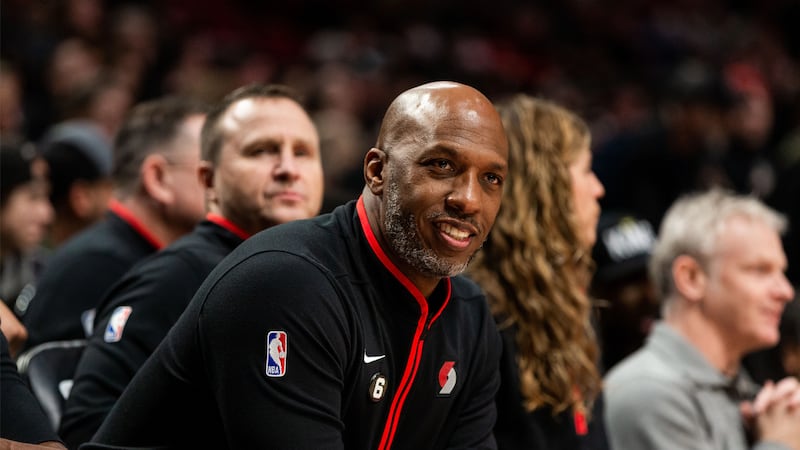Portland Trail Blazers head coach Chauncey Billups is having a rough time. After a promising 10-4 start, his team has floundered, winning only nine of their last 27 games and sliding into the bottom third of the standings at the season’s midway point.
Billups hasn’t exactly inspired confidence about a turnaround. Following a particularly painful home loss to the dreadful Orlando Magic, Billups said, “We’re just in a little funk, man. I don’t know what it is. I can’t pinpoint it.”
A contingent of Blazers fans, however, have started to pinpoint a possible problem: Portland’s execution.
Of particular alarm have been turnovers. Billups himself has characterized giveaways as the team’s Achilles’ heel. And for good reason: The Blazers turn the ball over 16 times per 100 possessions (all stats per stats.nba.com, unless otherwise noted). Only the Warriors and Rockets have been worse. It’s hard to win NBA games when 1 out of every 6 possessions end without a shot attempt.
The turnover problem has been compounded by tired legs late in games. The Blazers bench—which was shallow even before injuries to Justise Winslow, Gary Payton II, and Nassir Little—is last in the league in minutes played and points. Billups has begun to rely heavily on his starters; Anfernee Simons, Damian Lillard, and Jerami Grant have all logged multiple games of 38 minutes or more in recent weeks. (Since a basketball game is 48 minutes long, this means the team’s stars are on the court for nearly 80% of the contest.)
The toll of late-game fatigue is becoming clear. Over the past 15 games the Blazers are somehow even worse at turning the ball over in the final frame, averaging 19 per 100 possessions in the fourth quarter. When they do get a shot off, the ball isn’t going in the hoop. Lillard and company are shooting 41% on 3-pointers in the first three quarters, but only connect on 29% in the fourth.
The results have been downright gruesome at times. The Blazers did not score a field goal in the last 7:32 of a 108-99 loss to the Pacers on Jan. 6. Portland hasn’t seen basketball this ugly since PJ Carlesimo.

Obviously, the poor bench is not Billups’ fault. Even Mario Hezonja would be an upgrade at backup point guard right now. We’d all play Simons 42 minutes in a close game under these circumstances.
But there is growing concern that the turnovers are symptomatic of a larger problem. The Blazers go through stretches looking disoriented on both ends of the court. On Thursday night, for example, the Blazers surrendered six alley-oop dunks in the first 5:33 of the game to the Cavaliers. The defense has otherwise been solid lately—top 10 in the last 10 games—but these hiccups had Jusuf Nurkic futilely imploring his teammates to cover basic rotations.
The Blazers also struggle in possessions after timeouts. In theory, well-coached teams will excel after timeouts as it gives coaches a chance to diagram a specialized play for the situation. Portland is averaging only 1.03 points per possessions after a timeout—third worst in the Western Conference.
In defense of Billups, the Blazers are revamping the offense to move Lillard off the ball more. Presumably, this is designed to create a more resilient offense and prolong Lillard’s career. The Warriors rode a similar change by Steph Curry to a championship last season. The new look on offense is a dramatic departure from the Terry Stotts era that ran nearly every possession through Lillard.
So far, Lillard does seem to be shouldering less of the offensive burden. Simons, Grant and Nurkic all play critical roles in creating offense:
And here are the bottom 15 teams: pic.twitter.com/ZxKaKu0MTx
— SIS Hoops (@SIS_Hoops) January 12, 2023
The downside has been that the rest of the team must learn to play as a cohesive unit. In their own words, that remains a work in progress. Nurkic said to The Athletic’s Jason Quick: “We really try to make the right play, but at the end of the day, sometimes it’s not there. Sometimes it’s the extra pass we try to make, but we are trying to make a play that is not there. For the most part, our heart is in the right place…but we are getting judged by how we do, not how we want to do.”
(The absence of Payton, a signature offseason pickup who only recently returned from surgery, factors in here too. Tracking stats say he is one of the best cutters and around-the-rim finishers in the NBA.)
Ultimately, taking the ball out of Lillard’s hands more often serves as a symbolic litmus test for Billups. He can’t fix the team’s depth issues—that’s general manager Joe Cronin’s job. But he does need to build a system that maximizes the strengths of his players. As of now, Billups has created more questions than answers. Can Simons become a better playmaker? Can Josh Hart and Payton share the court if neither is willing to take a jump shot? Can Nurkic act as a fulcrum point when teams know he struggles to finish around the rim?
The good news is that Billups at least has a vision of what his team should look like. Whether or not that vision will result in a winning team is something both Cronin and fans will be watching closely.
